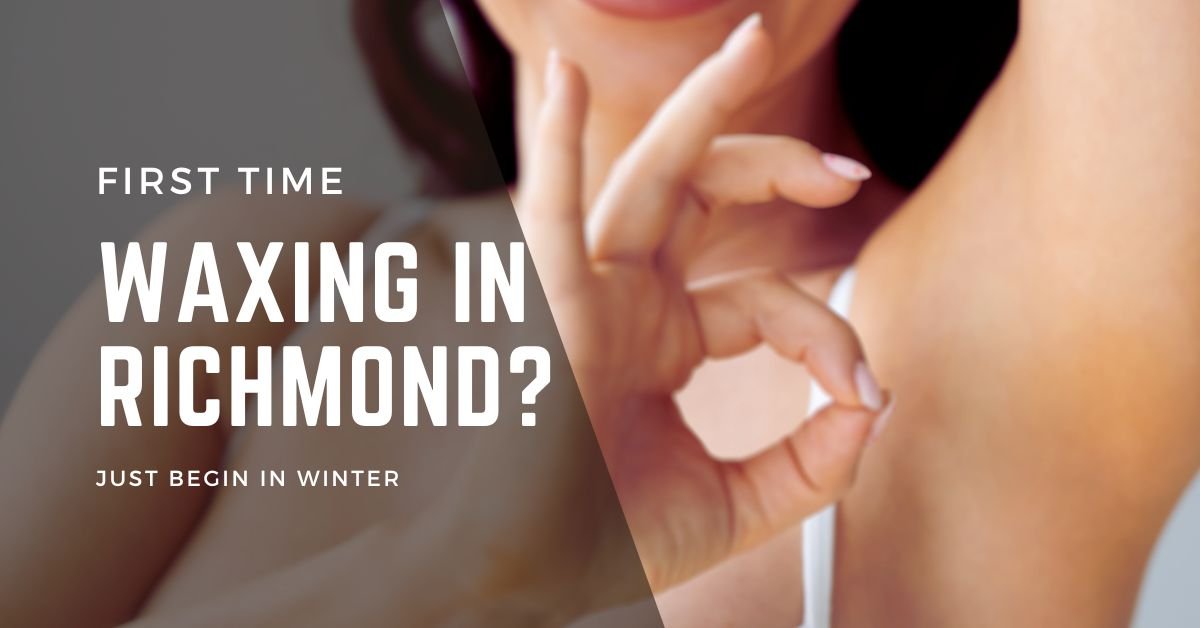First wax? Just begin in winter
Winter might not seem like the obvious season to get started with hair removal, but it actually makes perfect sense – especially for first-time waxers in Richmond, VA.
With cooler temperatures, cozy outfits, and fewer outdoor activities, waxing during winter can be less intimidating and more convenient than you might think. Whether you’re a college student, an IT professional, or someone in the fashion and styling field, this guide will help you navigate your first waxing session with confidence. Let’s dig into some of the most common misconceptions and best practices, so you can stride into springtime with smooth, radiant skin.
Common myths about waxing in winter
When most people think about waxing, their mind often jumps to summer—shorts, sundresses, and beach trips. however, winter is arguably the perfect time to get started, and there are plenty of myths surrounding bikini wax and winters that need clearing up:
- “Waxing is only for warm weather.”
Contrary to popular belief, waxing isn’t just a summertime ritual. Many first time waxers find that starting in winter helps them perfect their routine without the pressure of constantly showing skin. By the time warmer months roll around, you’ll already be comfortable with the process. - “cold weather makes waxing more painful.”
Pain tolerance can vary from person to person, but the ambient temperature alone doesn’t determine how waxing feels. In fact, properly prepped skin – through exfoliation and moisturizing – can minimize discomfort, regardless of outside conditions. - “no one sees my skin in winter, so waxing is pointless.”
Waxing is about more than just aesthetics. It can help remove dead skin cells, reduce ingrown hairs, and promote smoother, healthier skin. Plus, you’ll feel more confident knowing you’re maintaining a consistent grooming routine. - “hair doesn’t grow as much in winter, so I don’t need to wax.”
While it’s true that hair growth often slows in cooler months, it doesn’t stop entirely. Sticking to a consistent schedule helps hair grow in more evenly, making subsequent sessions less uncomfortable and more effective.
The importance of seasons—why winter is the best time to start
Reduced sun exposure
Richmond’s summers can get quite sunny, and sunbathing or outdoor sports can irritate freshly waxed skin. In winter, you’re covered up more, meaning you have a lower risk of uv damage or sunburn. This break from harsh sunlight gives your skin extra time to recover, making waxing during winter a gentler introduction for first-time waxers.
Slower hair growth
Cold weather and lower humidity levels can slow hair growth for many. Because hair doesn’t sprout as fast, you might find that waxing appointments can be spaced out a bit longer. This makes winter an excellent trial run, helping you learn your unique hair growth cycles without feeling pressured.
Skin care emphasis
Winter air is notoriously drying, which can leave skin flaky or sensitive. Although this may seem challenging, it’s actually a perfect opportunity to improve your skincare routine. consistent moisturization keeps skin soft and supple, enabling wax to adhere to hairs rather than dehydrated skin cells. The result is a cleaner, more comfortable wax with fewer irritations.
Comfort during regrowth
When the regrowth phase comes around, bundling up in sweaters and jeans means you’ll feel less self-conscious than if you were wearing shorts every day. This can be especially reassuring for first-time waxers who are still getting used to a few days of hair regrowth between sessions.
Bikini waxing as a first timer during winter?
If you’re new to bikini waxing or planning a full brazilian, winter offers a discreet cushion of time and clothing coverage to experiment. you won’t have to stress about wearing a swimsuit the very next weekend, which is often a concern in the summer. This lets your skin fully recover and gives you the freedom to observe how your body reacts to the treatment.
- Confidence booster: By the time summer rolls around, you’ll have had multiple sessions and a better grasp on how your skin responds. no more last-minute panic waxes!
- Reduced irritation: Cooler temperatures usually mean less sweating. less sweat often translates into fewer chances of post-wax irritation or ingrown hairs.
Maintenance of body hair after waxing
Maintaining freshly waxed skin goes beyond just the initial appointment. for lasting smoothness and minimal discomfort:
- Moisturize daily: Lock in hydration by applying a gentle, fragrance-free lotion or natural oil after showering. this not only keeps skin silky but also deters ingrown hairs.
- Avoid tight clothing: Immediately after a waxing session, wear loose-fitting clothes to prevent friction and irritation.
- Skip harsh scrubs: Gentle exfoliation a few times a week is beneficial, but over-exfoliating can damage sensitive skin and increase redness.
If you’re looking for professional guidance in the Richmond area, visit short pump threading for expert advice on maintaining your freshly waxed skin.
Precautions and preparation for winter waxing
Importance of hydration and moisturizing
One of the biggest game-changers for a successful winter wax is consistent hydration. dry, flaky skin creates a less-than-ideal surface for wax to grip hair. aim to drink plenty of water and use a nourishing moisturizer to keep your skin in top shape.
Importance of exfoliation
A gentle exfoliating routine – think sugar scrubs or mild chemical exfoliants – keeps dead skin cells at bay. However, don’t overdo it; two or three times a week is plenty. over-exfoliation can irritate skin, making waxing uncomfortable.
What else to watch out for
- Temperature differences: Jumping from a hot shower into freezing outdoor temperatures can be shocking for your skin. give your skin a moment to adjust before heading out.
- Patch test: If you’re unsure how your skin might react, especially in winter, do a small patch test 24 hours before your appointment, particularly if you’re trying new wax formulas.
Sugaring or hard wax – which is best suited for winter?
Winter can be the perfect time to explore different waxing methods. two popular choices include:
- Sugaring : Made from natural ingredients like sugar, water, and lemon juice. It is generally gentler on skin and may result in fewer ingrown hairs. This method suits those with sensitive skin or concerns about using synthetic products.
- Hard wax : Known for being gentle on skin since it adheres more to the hair than the skin. often used for more sensitive areas, such as bikini wax. ideal for cooler weather because the wax sets quickly, minimizing discomfort.
Choosing between these methods comes down to personal preference and skin sensitivity. don’t hesitate to consult a professional wax esthetician to find the best approach for your skin – especially if you’re a first time waxer.
The importance of understanding wax types and techniques
Not all waxes are created equal. soft wax, hard wax, sugaring, and even roll-on wax each come with their own benefits and best-use scenarios:
- Soft wax: Applied in a thin layer and removed with a cloth strip, making it great for large areas like legs or arms.
- Hard wax: No strip needed – it hardens on the skin and is pulled off directly. This is helpful for sensitive regions such as underarms or the bikini line.
- Expert techniques: Proper angle of removal, tension on the skin, and quick, decisive pulls reduce discomfort and prevent bruising.
Understanding these nuances can improve your experience, ensuring your waxing session is both efficient and as comfortable as possible.
Practical tips or key takeaways
- Plan ahead: Schedule waxing sessions when you have fewer outdoor activities. Winter weekends in Richmond often involve cozy indoor gatherings, making it a convenient time to recover.
- Stay cozy: Right after your appointment, opt for warm but loose clothing like sweatpants or joggers. your skin will appreciate the gentle touch.
- Spot test: If it’s your first time waxing in Richmond, VA, always do a small patch test – especially if you’re trying a new type of wax or going for bikini waxing.
- Pamper post-wax: Treat your skin to soothing balms or lotions containing aloe vera or chamomile. This can quell any lingering redness or sensitivity.
- Professional advice: Unsure about technique or product choice? check out reputable sources like the american academy of dermatology for guidance, or consult local estheticians familiar with winter skin concerns.
Conclusion
Winter provides a unique opportunity to ease into a waxing routine without the social pressure of immediate swimsuit season or constant sun exposure. From tackling bikini wax and winters to understanding sugaring versus hard wax, there are many ways to customize your experience. The key is to go in well-prepared: keep your skin hydrated, choose the right wax type for your comfort level, and don’t shy away from professional help when needed.
Ready to take the plunge and enjoy smoother skin all year round? Book your first waxing session at short pump threading in Richmond, virginia. Our experienced team is here to guide you through every step—making your winter wax not just bearable, but genuinely pleasant.





